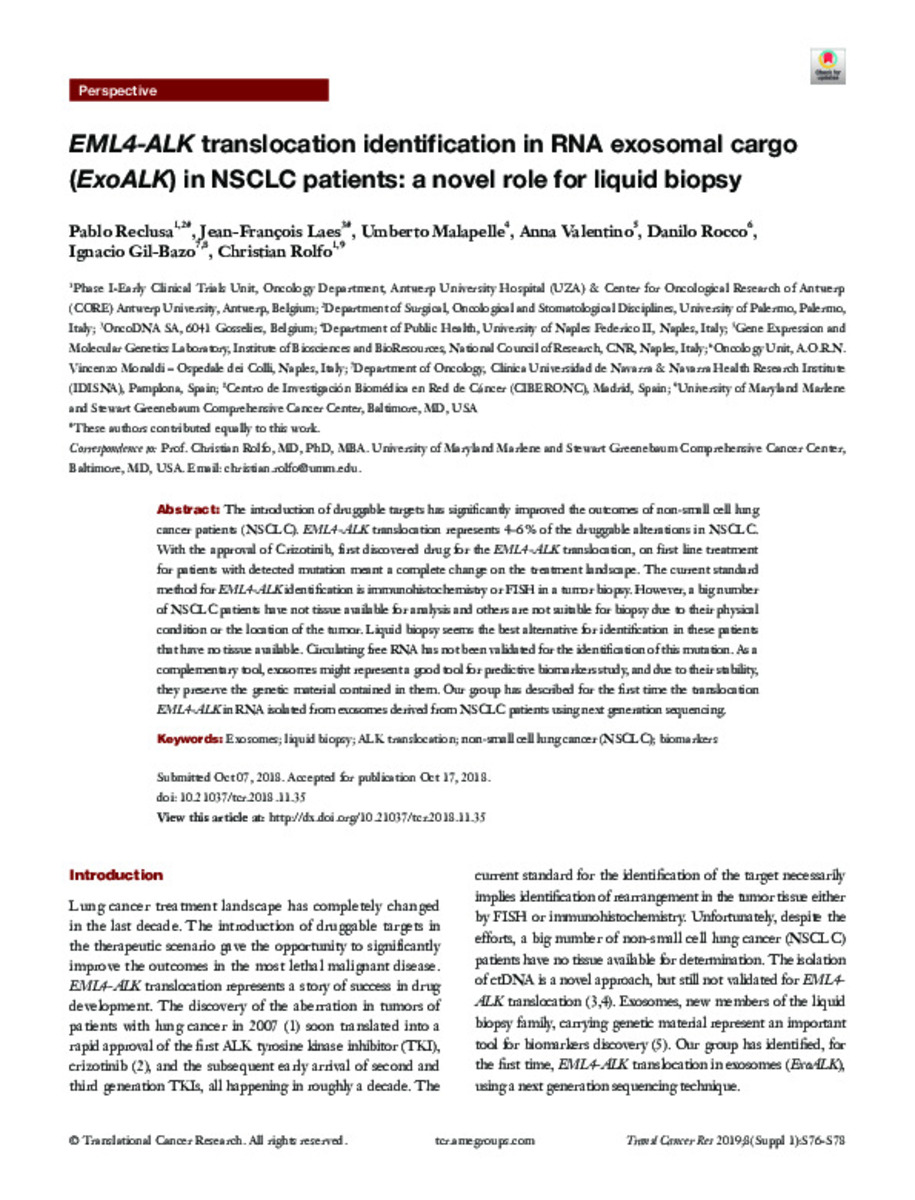EML4-ALK translocation identification in RNA exosomal cargo (ExoALK) in NSCLC patients: a novel role for liquid biopsy
Keywords:
Materias Investigacion::Ciencias de la Salud::Oncología
Exosomes
Liquid biopsy
ALK translocation
Non-small cell lung cancer (NSCLC)
Biomarkers
Publisher:
AME Publishing Company
Note:
This is an Open Access article distributed in accordance with the Creative Commons Attribution-NonCommercial-NoDerivs 4.0 International License (CC BY-NC-ND 4.0), which permits the noncommercial replication and distribution of the article with the strict proviso that no changes or edits are made and the original work is properly cited (including links to both the formal publication through the relevant DOI and the license). See: https://creativecommons.org/licenses/by-nc-nd/4.0/.
Citation:
Reclusa, P. (Pablo); Laes, J.F. (Jean-François); Malapelle, U. (Umberto); et al. "EML4-ALK translocation identification in RNA exosomal cargo (ExoALK) in NSCLC patients: a novel role for liquid biopsy". Translational Cancer Research. 8 (1), 2019, S76 - S78
Statistics and impact
0 citas en

0 citas en

Items in Dadun are protected by copyright, with all rights reserved, unless otherwise indicated.







